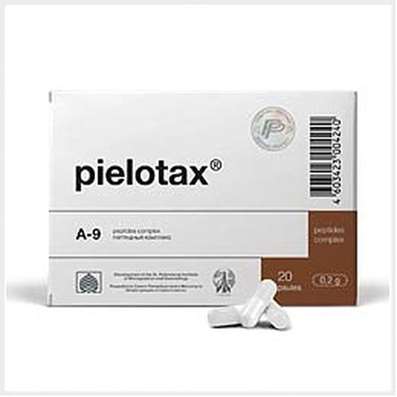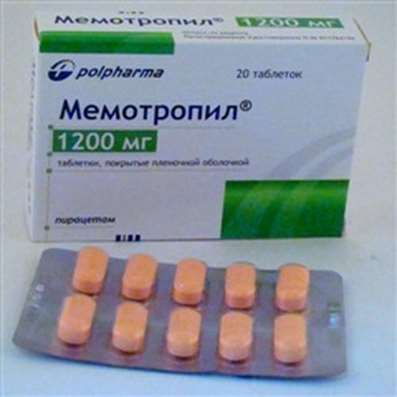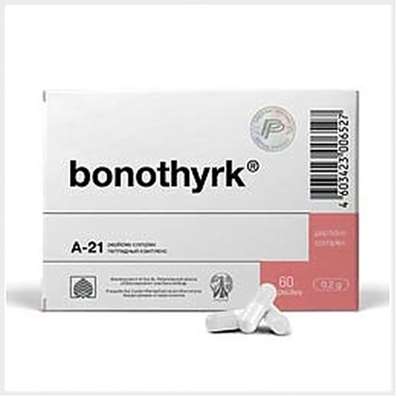Instruction for use: Tranexamic acid
I want this, give me price
Trade name of the drug – Sanksamik, Stagemin, Traxara, Tramestone, Tranexamic acid, Transamcha, Throxaminat, Exacyl
The Latin name of the substance Tranexamic acid
Acidum tranexamicum (genus. Acidi tranexamici)
Chemical name
Trans-4- (Aminomethyl) cyclohexanecarboxylic acid
Gross formula
C8H15NO2
Pharmacological group:
Inhibitors of fibrinolysis
The nosological classification (ICD-10)
D61 Other aplastic anemia: Fanconi anemia; Anemia aplastic
D66 Hereditary factor VIII deficiency: Congenital insufficiency of factor VIII; Hemophilia; Hemophilia A; Hemophilia classical; Deficiency of antihemophilic factor of blood VIII; Deficiency of the coagulation factor VIII; Inhibitory form of hemophilia A; Bleeding at hemophilia A; Hereditary hemophilia; Hereditary anomalies of antihemophilic factor VIII; Failure factor VIII; Insufficiency of coagulation factor VIII; Acquired hemophilia; Coagulopathies are hereditary
D68.9 Violation of coagulation, unspecified: Multiple bleeding; Violation of blood clotting; Reduced blood clotting; Coagulopathies acquired
D69.3 Idiopathic Thrombocytopenic Purpura: Werlhof's Disease; Idiopathic autoimmune thrombocytopenia; Idiopathic thrombocytopenic purpura of adults; Idiopathic thrombocytopenic purpura in adults; Immune idiopathic thrombocytopenic purpura; Immune thrombocytopenia; Bleeding in patients with thrombocytopenic purpura; Evans Syndrome; Thrombocytopenic purpura; Thrombocytopenia of immune origin; Chronic idiopathic thrombocytopenic purpura; Essential thrombocytopenia; Autoimmune thrombocytopenic purpura in pregnancy; Posttransfusion purpura
J03.9 Acute tonsillitis, unspecified (angina agranulocytic): Throat infections; Acute tonsillitis; Angina; Follicular tonsillitis; Angina alimentary-hemorrhagic; Secondary sore throat; Sore throat primary; Angina follicular; Inflammatory diseases of the tonsils; Catarrhal angina; Lacunar angina; Acute Sore Throat; Tonsillitis; Tonsillitis acute; Tonsillar angina; Follicular sore throat; Bacterial tonsillitis
J04 Acute laryngitis and tracheitis: Cough in diseases of the upper respiratory tract; Laryngitis; Laryngitis acute; Tracheitis acute; Pharyngolaryngitis; Infectious-inflammatory disease of ENT organs
K92.2 Gastrointestinal bleeding, unspecified: Gastrointestinal and intestinal bleeding; Acute bleeding from the upper gastrointestinal tract; Gastric bleeding; Gastrointestinal bleeding; Intraoperative abdominal bleeding; Intestinal bleeding; Bleeding in the upper part of the digestive tract; Bleeding gastrointestinal; Bleeding from the upper gastrointestinal tract; Bleeding from the digestive tract; Bleeding intraoperative abdominal; Recurrent bleeding in the digestive tract; Diagnosis of bleeding from the small intestine; Ulcer bleeding; Mallory-Weiss syndrome; Recurrent bleeding from peptic ulcers; Bleeding gastric
L20 Atopic dermatitis: Allergic diseases of the skin; Allergic skin disease noninfectious etiology; Allergic skin disease etiology nemikrobnoy; Allergic skin diseases; Allergic skin lesions; Allergic reactions on the skin; atopic dermatitis; Allergic dermatosis; Allergic diathesis; Allergic itching dermatosis; Allergic skin disease; Allergic skin irritation; allergic Dermatitis; atopic Dermatitis; allergic dermatoses; exudative diathesis; Itchy atopic eczema Itchy allergic dermatosis; Allergic skin disease; Cutaneous allergic reaction to drugs and chemicals; Cutaneous reactions to medications; Skin and allergic disease; Acute eczema; common neurodermatitis; Chronic atopic dermatitis; Exudative diathesis
L30.9 Unspecified Dermatitis: Allergic dermatoses complicated by a secondary bacterial infection; Anal eczema; Bacterial maturation; Varicose Eczema; Venous dermatitis; Inflammation of the skin; Inflammation of the skin upon contact with plants; Inflammatory Skin Disease; Inflammatory Skin Diseases; Inflammatory Skin Diseases; Inflammatory skin reactions; Inflammatory processes of the skin; Hypostatic dermatitis; Fungal Eczema; Fungal dermatosis; Dermatitis; Dermatitis is stagnant; Dermatitis and eczema in the anal area; Dermatitis acute contact; Perianal dermatitis; Dermatosis; Dermatosis of the scalp; Dermatosis of psoriasis; Dermatosis with persistent itching; Dermatoses; Dermatoses itchy; Other itching dermatoses; Significant eczematous manifestations; Itching with dermatoses; Itching eczema; Itching dermatoses; Itching dermatitis; Itching dermatosis; True eczema; Skin reaction to insect bites; Skin itching with dermatosis; Constitutional eczema; Weeping eczema; Drowsing inflammatory skin disease; Dying Infectious-Inflammatory Skin Disease; Non-allergic dermatitis; Nummular eczema; Acute contact eczema; Acute inflammatory skin disease; Acute dermatosis; Acute severe dermatosis; Perianal dermatitis; Superficial dermatosis; Subacute Contact Eczema; Simple dermatitis; Occupational dermatitis; Psychogenic dermatosis; Bubble dermatitis of newborns; Pustular eruptions; Irritation and redness of the skin; Low-flammable eczema; Dry atrophic eczema; Dry eczema; Toxic dermatitis; Ear eczema like dermatitis; Chronic eczema; Chronic dermatosis; Chronic dermatosis; Chronic common dermatosis; Scaly papular dermatosis; Eczema; Eczema anal region; Eczema of the hands; Eczema Contact; Eczema lichenized; Eczema Nummular; Eczema acute; Eczema acute contact; Eczema subacute; Eczematous dermatitis; Eczema-like rashes; Ecome exogenous; Endogenous eczema; Gluteal dermatitis; Limited itching dermatitis
L50 Urticaria: Idiopathic chronic urticarial; Injury Urticaria; Chronic urticarial; Hives of the newborn
R04.0 Epistaxis: Nasal bleeding; Nasal bleeding; Epistaxis
R58 Bleeding, not elsewhere classified: Abdominal apoplexy; Hemorrhagia; Haemorrhage of the esophagus; Hemorrhage; Generalized bleeding; Diffuse bleeding; Diffuse bleeding; Prolonged bleeding; Blood loss; Blood loss during surgical interventions; Bleeding during surgery and in the postoperative period; Bleeding during labor; Bleeding and haemorrhage in hemophilia B; Bleeding from the gums; Bleeding intraoperative abdominal; Bleeding against a background of coumarin anticoagulants; Hepatic hepatitis; Bleeding in hemophilia A; Bleeding at hemophilia A; Bleeding with inhibitory forms of hemophilia A and B; Bleeding due to leukemia; Bleeding in patients with leukemia; Bleeding; Bleeding due to portal hypertension; Bleeding due to hyperfibrinolysis; Drug bleeding; Local bleeding; Local bleeding due to activation of fibrinolysis; Massive blood loss; Acute blood loss; Parenchymal hemorrhage; Hepatic bleeding; Postoperative hemorrhage; Kidney bleeding; Vascular-platelet hemostasis; Traumatic bleeding; Threatening bleeding; Chronic blood loss
T45.6 Poisoning with drugs that affect fibrinolysis: Antidote for fibrinolytic therapy; Overdose of anticoagulants or fibrinolytics
T81.0 Bleeding and hematoma complicating the procedure, not elsewhere classified: Bleeding in the postoperative period; Bleeding during transfusion; Bleeding during operations on the brain; Bleeding during surgical interventions; Bleeding after colorectal interventions; Bleeding after prostatectomy; Bleeding during surgery and in the postoperative period; Bleeding due to surgery on the prostate and urinary tract
CAS code
1197-18-8
Characteristics of the substance Tranexamic acid
White crystalline powder, soluble in water. The aqueous solution has a pH of 6.5-7.5.
Pharmacology
Mode action - Anti-inflammatory, anti-allergic, antifibrinolytic.
Competitively inhibits the plasminogen activator, at higher concentrations - binds plasmin. Lengthens thrombin time. It inhibits the formation of kinins and other peptides involved in inflammatory and allergic reactions.
When ingested, 30-50% of the dose is absorbed. Cmax is achieved in 3 hours after administration and is at a dosage of 1 and 2 g, respectively, 8 and 15 mg / l. The concentration-time curve has a three-phase form with T1 / 2 in the terminal phase of 2 hours. In blood, about 3% is associated with a protein (plasminogen). The initial volume of distribution is 9-12 liters. Easily passes through the histohematological barriers, including BBB, placental. The concentration in the cerebrospinal fluid is 1/10 of the plasma one. It is found in seminal fluid, where it inhibits fibrinolytic activity, but does not affect the migration of spermatozoa. A minor part undergoes biotransformation. The main way of excretion is glomerular filtration. More than 95% (mostly unchanged) is excreted in the urine. The total renal clearance is equal to the plasma one.
Antifibrinolytic concentration in various tissues persists for 17 hours, in plasma - up to 7-8 hours.
Application of the substance Tranexamic acid
Bleeding due to increased total and local fibrinolysis (treatment and prevention): hemophilia, hemorrhagic complications of fibrinolytic therapy, thrombocytopenic purpura, aplastic anemia, leukemia, bleeding during surgery and postoperative period, uterine at delivery, pulmonary, nasal, gastrointestinal, Meno- and metrorrhagia, macrogemuria, caused by bleeding from the lower parts of the urinary system; Aphthous stomatitis, tonsillitis, laryngopharyngitis, hereditary angioedema, eczema, allergic dermatitis, urticaria, drug and toxic rash.
Contraindications
Hypersensitivity, subarachnoid hemorrhage, renal insufficiency, thrombophilic conditions (deep vein thrombosis, thromboembolic syndrome, myocardial infarction), violation of color vision.
Pregnancy and breast-feeding
The action category for fetus by FDA is B.
Side effects of Tranexamic acid
Dyspeptic phenomena (anorexia, nausea, vomiting, diarrhea), dizziness, weakness, drowsiness, tachycardia, chest pain, hypotension (with rapid on / in injection), impaired color vision, skin allergic reactions.
Interaction
Incompatible with urokinase, norepinephrine bitartrate, deoxyepinefrin hydrochloride, metarmine bitartrate, dipyridamole, diazepam. In solution, tranexamic acid reacts (it is impossible to mix) with antibiotics (benzylpenicillin, tetracyclines), blood proteins.
Routes of administration
Inside.
Precaution measures
With renal failure (depending on the degree of increase in serum creatinine), reduce the dose and the frequency of administration. During and after treatment for several days, it is necessary to observe an ophthalmologist with checking for acuity, fields and color vision, examining the fundus. Use with caution in combination with tissue haemostatic drugs, hemocoagulase (in high doses), heparin. In the treatment of hematuria of renal genesis, the risk of mechanical anuria increases as a result of the formation of a clot in the urethra.

 Cart
Cart





